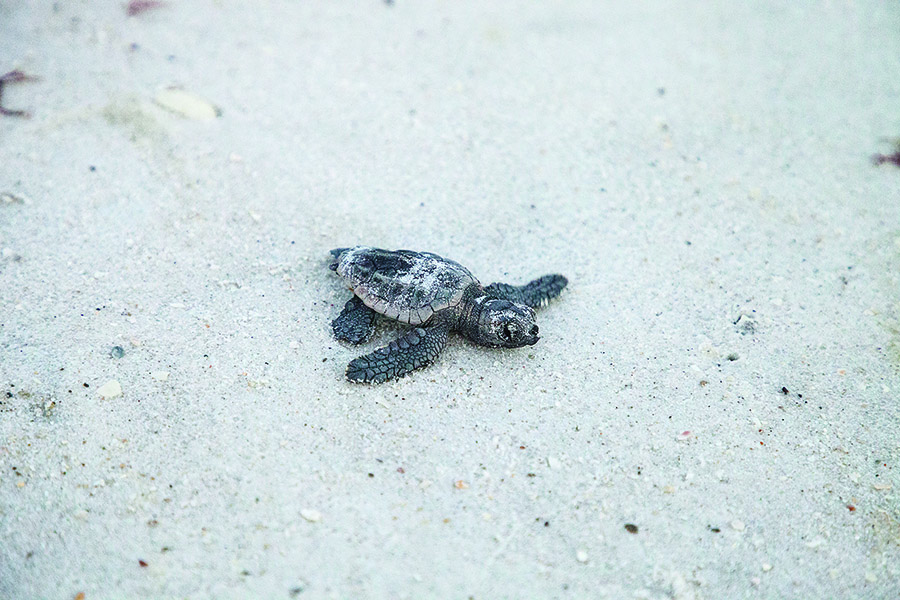Every summer, part of Sarasota’s human population departs, fleeing the heat and the thunderstorms, but a different population takes their place - sea turtles. From May 1st through October 31st, Sarasota County beaches are home to the largest population of nesting sea turtles. As numerous as this population is, however, it does not matriculate by chance or without risk. For although Sarasota County averages more than 200 sea turtles per mile along coastal shorelines, only one out of every 1,000 hatchlings survive to adulthood. It is these same hatchlings that return to the very same beaches decades later to lay their own eggs.
“Once the water gets warm enough, nesting sea turtles come from the gulf of Mexico and onto the beach to lay their eggs at night. The 200 hundred pound female sea turtle then sits atop the nest to bury it and in 45-80 days the hatchlings begin to emerge,” says Tim Thurman, president of the Longboat Key Turtle Watch.
The biggest threat to the hatchlings outside predatory birds and wildlife? Unnatural light. Once they emerge, hatchlings are programmed to leave their nests—often in the upper part of the beach, away from the water—and head towards the brightest light that they see. While that should be the ocean, it’s unfortunately not always the case. “In the natural world the upwards part of the beach shouldn’t be emitting or reflecting any light. Conversely, the water should be the brightest part of the beach - it reflects all the natural light from the moon and the stars. That’s what makes lightning a huge problem for hatchlings - any light visible on the beach from buildings to houses to condominiums —even flashlights—can disorient the hatchlings,” attests Thurman. So how can we remedy this? Try to avoid the beach at night if possible, but if you are on a nighttime stroll, use flashlights with low wavelength bulbs such as amber or LEDs as even the light from a phone flashlight can become disorienting for hatchlings. When on the beach during the day, avoid digging large holes or making big aberrations to the sand.
While the actual nests are safely buried underneath the sand, holes dug from umbrellas can disturb the nestsIf you encounter an injured or distressed sea turtles make sure to call the Florida Fish & Wildlife Conservation Commission at 888-404-FWCC (3922)









